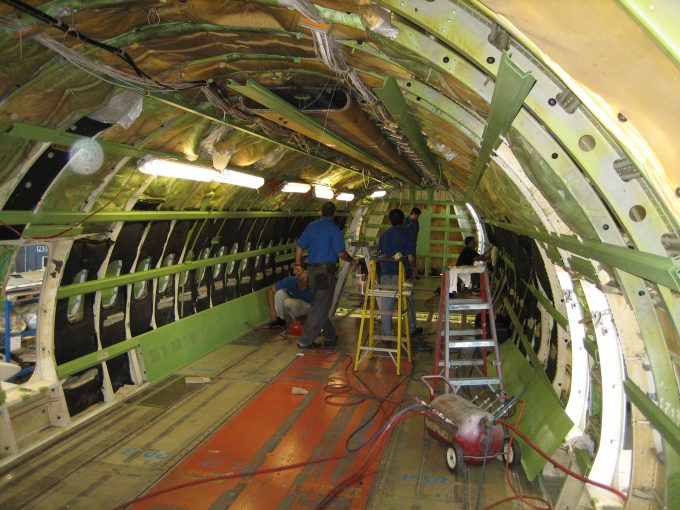Airfreight demand grows but 777F production logjam hobbles capacity
Boeing’s inability to deliver new 777-200 freighters is crimping carrier capacity to meet the strong ...

Freighter conversion specialist Aeronautical Engineers has been busy, and the months ahead promise more work to come.
“We signed some contracts over the last two months, and we’re going to sign some more -800 contracts in the next few weeks,” said Bob Convey, vice-president of sales & marketing of the company, which has focused heavily on 737 conversions.
“We’re seeing interest both from asset owners and from airlines,” he added.
Another specialist, Precision Aircraft Solutions, which concentrates primarily on turning 757s and A321s into freighters, is also busy, according to Brian McCarthy, vice-president aircraft trading.
“Interest in our programmes has certainly increased in the last few weeks,” he said, adding that finance and leasing companies had been at the forefront, but airlines with grounded passenger aircraft were also interested.
With lots of planes sitting idle, conversion feedstock is readily available. Mr Coney said some owners of 737-800s had been considering freighter conversion last year, but decided to keep them in passenger service, thanks to buoyant demand in the segment at the time.
“They were primed and prepped. It just didn’t make sense to do a conversion at the time,” he said.
This week, American Airlines is going to put up 24 757s for bid, Mr McCarthy noted.
“Twenty-two of these are really great candidates. They’re late 1990s, early 2000s-built and relatively low in cycles,” he said.
He does not expect many 757s now grounded to return to passenger service. As demand slowly ramps up again, airlines will be more likely to deploy smaller planes like 737s operating at higher frequencies than the larger 757.
And prices are low: older 757 airframes with relatively weak avionics are available in the $400,000-$600,000 range, while models with 16,000-20,000 cycles and more advanced avionics will fetch $1m-$1.5m, according to Mr McCarthy. And a surge of 757s becoming available would push down prices significantly, and is very likely, he says.
“I don’t think the carnage has yet begun, in terms of aircraft for sale. Airlines are very needy for cash, but the real distress has not begun to show yet,” he added.
The pressure on airlines to cut costs and preserve cash is mounting, while leasing firms find themselves with lots of aircraft on their hands. For some of these, especially those that entered the market in recent years and have not experienced a downturn, the going is going to be rough, predicted Mr McCarthy.
Mr Convey pointed out that many lessors entered the market when residual values of 737-800s were inflated and now face a steep drop in prices.
“I think, summer-to-autumn, more airlines will be forced to return or sell aircraft, and when enough are on the market, that will hit the price. Dash 800s have been overpriced for at least the last five years, and I wouldn’t be surprised if some of the old -800s will take a $5m haircut.”
Similarly, residual values of A321s were quite high before Covid-19, Mr McCarthy added. He reckons they will fall from a high mark of $3.2m for a hull to 1.8m-$2.2m.
Both companies could handle a surge in conversion orders, as so far the pandemic has not disrupted their activities, except for brief interruptions to test engineering teams. For the most part, it has been relatively straightforward to maintain distancing between engineers and continue conversion work, they said.
In the current situation, some passenger airlines have taken out seats to load freight on the main deck as well as in the bellyhold, but Mr McCarthy does not view this as a concern.
“Those are special exemptions. They won’t be tolerated long-term,” he said. “And they can only take light cargo and entail cable and wiring overhead. It’s just a short-term solution.”
Comment on this article